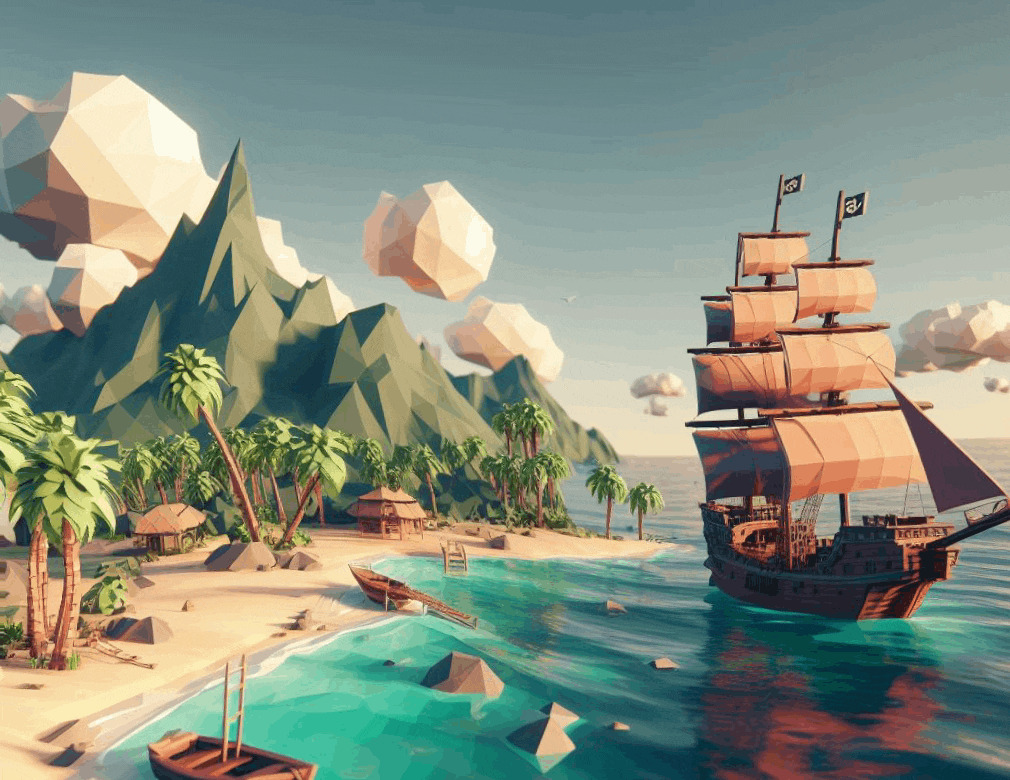Orthogonal Camera View Water Shader
I’m going to be honest – I truly don’t understand shaders. When I was looking for shaders for my Godot 3.5 game, I found a lot of shaders for perspective view but not a lot for orthogonal view. I was able to cobble this together using a combination of shaders.
I have found a glitch that I will absolutely not be able to fix because I truly don’t understand how this works. When the camera is zoomed out, the water looks odd. I know it’s from the code I added for the foam/intersect portion of it, but I can’t figure out why. Otherwise, it works well! I have this applied to a MeshInstance Plane object.
Shader code
//credit: https://www.reddit.com/r/godot/comments/11j1sh8/need_help_with_orthographic_water_shaders/
//credit: https://godotshaders.com/shader/cheap-water-shader/
//credit: https://godotshaders.com/shader/water-shader-for-realistic-look/
//cobbled together by dangerz for SpecFreq, https://www.specfreq.com
shader_type spatial;
render_mode specular_schlick_ggx, unshaded, cull_back, async_visible; // don't know what any of these do
uniform vec4 tint_color : hint_color = vec4( 0.3, 0.4, 0.45, 1.0);
uniform sampler2D caustics : hint_white;
uniform float slowdown : hint_range( 0.1, 10.0, 0.1 ) = 5.0;
uniform float time_caust : hint_range( 0.01, 1.0, 0.01 ) = 0.13;
uniform float caust_form : hint_range( 0.01, 1.0, 0.01 ) = 0.15;
uniform float tile: hint_range( 0.1, 16.0, 0.1 ) = 4.0;
uniform float height_scale = 0.5;
uniform sampler2D noise;
uniform sampler2D normalmap;
varying vec2 tex_position;
const float wave_pow = 0.65; //yes, waves power
const float wave_pow2 = 4.0; //so much wave power that aquaman is jealous
const float wave_scale = 0.4; //maybe related to fish scales?
const float wave_scale2 = 0.3;
const float wave_scale3 = 0.5;
const float wave_scale4 = 0.6;
uniform vec4 intersection_color : hint_color;
uniform vec4 main_color : hint_color;
uniform float intersection_max_threshold = 0.5;
float getDepth(vec2 screen_uv, float raw_depth, mat4 inv_projection_matrix){
// Credit: https://godotshaders.com/shader/depth-modulated-pixel-outline-in-screen-space/
vec3 normalized_device_coordinates = vec3(screen_uv * 2.0 - 1.0, raw_depth);
vec4 view_space = inv_projection_matrix * vec4(normalized_device_coordinates, 1.0);
view_space.xyz /= view_space.w; //wut
return -view_space.z;
}
float wave(vec2 position){ //hello *wave back*
position += texture(noise, position / 64.0).x * 2.0 - 1.0;
vec2 wv = 1.0 - abs(sin(position));
return pow(1.0 - pow(wv.x * wv.y, wave_pow), wave_pow2);
}
float height(vec2 position, float time) { //time, yeah, definitely that
float d = wave((position + time) * wave_scale) * 0.3;
d += wave((position - time) * wave_scale2) * 0.3; //so friendly with all the waving.. is it too much tho??
d += wave((position + time) * wave_scale3) * 0.2;
d += wave((position - time) * wave_scale4) * 0.2;
return d;
}
void fragment() { //fragment means its just a small part of something. *science*
float caustics_form = texture(caustics , UV * (tile + sin(TIME / slowdown) * time_caust )).r;//
vec2 caustics_uv = UV * (tile + cos(TIME / slowdown) * time_caust ) + caustics_form * caust_form ;
float caustics_final = texture(caustics, caustics_uv).r; //whats a caustic lol no idea
float base_depth = getDepth(SCREEN_UV, FRAGCOORD.z, INV_PROJECTION_MATRIX);
float surface_depth = getDepth(SCREEN_UV, texture(DEPTH_TEXTURE, SCREEN_UV).x, INV_PROJECTION_MATRIX);
float diff = surface_depth - base_depth; //probably at least 4? 3? honestly no idea
vec4 foam = mix(intersection_color, main_color, step(intersection_max_threshold, diff)); //i renamed this from col to foam. I am smart.
ALBEDO = (1.0-SCREEN_UV.y) * caustics_final * tint_color.rgb + foam.rgb; //i didn't know what to do with foam, just tried multiplying, dividing, then adding worked so I kept that
ALPHA = min(SCREEN_UV.y + 0.5, 1.0 ) * tint_color.a + foam.r; //this shader is the alpha shader
}
void vertex() { //so many good comments in here, none are mine
// Get the current vertex position
vec3 pos = VERTEX;
// Get the height of the terrain at this position
float k = height(pos.xz, TIME);
// Set the Y position of the vertex to the terrain height
VERTEX.y = k * height_scale;
// Calculate the normal vector using nearby terrain heights
NORMAL = normalize(vec3(
k - height(pos.xz + vec2(0.1, 0.0), TIME),
0.1,
k - height(pos.xz + vec2(0.0, 0.1), TIME)
));
// Apply the normal map to the normal vector
NORMAL = normalize(texture(normalmap, tex_position).rgb * 2.0 - 1.0 + NORMAL);
} // how does any of this work. just like the tide, no one truly knows







maybe the camera stops rendering certain things when it’s too far away?
I literally have no idea.. I did find if I change line 32 from 2.0-1.0 to 3.0-1.0, the camera renders from further away. Any higher than 3 and it all falls apart though.
Change INV_PROJECTION_MATRIX to inverse(PROJECTION_MATRIX) and it works fine.
Looks like the first one is broken
This is a masterclass on the importance of commenting your code.
What’s really cool is that I upgraded my game to Godot 4.3 and now everything is broken. Spoiler alert: this shader doesn’t work in 4.3. If I knew anything about shaders maybe I could fix it. Spoiler alert: I don’t.
Oh wait, if I apply IsukyPohlo’s update above this shader works in Godot 4.3. It is a miracle.